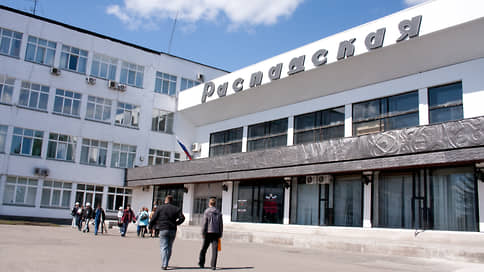“Raspadskaya” leaves the dollar – Newspaper Kommersant No. 146 (7347) of 08/12/2022
[ad_1]

Coal companies in trade with China are increasingly using the yuan to pay for the delivered raw materials. According to Raspadskaya’s report, the Chinese currency equivalent to $92 million is placed on its accounts. A year ago, the company did not keep yuan. The number of dollars kept is falling. Clients are also moving away from the dollar when trading with Russia: for example, India is increasingly paying for Russian coal in non-dollar currencies, among which the yuan dominates, as well as UAE dirhams and Hong Kong dollars.
Chinese yuan, the amount of which is equivalent to $92 million, is placed on the bank accounts of the Raspadskaya coal company, follows from its financial reporting for the first half of the year. As of the end of 2021, there were no yuan in the accounts. At the same time, Raspadskaya reduced the amount of dollars in its accounts from $396 million at the end of 2021 to $45 million. Yuan appeared on the accounts of Evraz, which controls Raspadskaya (which is under British sanctions). The holding’s statements refer to the Chinese currency in the equivalent of $99 million.
Raspadskaya is the largest producer of coking coal, which is used in metallurgy. Raspadskaya’s assets are located in Kuzbass. According to the results of the first half of the year, the company increased its net profit four times, to $662 million, EBITDA increased 3.4 times, to $1 billion.
The yuan is increasingly being used by Russian commodity companies to trade with Asian clients who fear violating Western sanctions against Moscow. Reuters reported on August 10 that in June, Indian buyers paid at least 742,000 tons, or 44% of all Russian coal imports, in currencies other than the dollar: the yuan accounted for 31% of these payments, the Hong Kong dollar – 28%, a quarter – into euros and one sixth into UAE dirhams.
Raspadskaya is increasingly focused on the Asia-Pacific markets.
Evraz reports for the first half of 2022 (.pdf) it was said that in May-June 70-90% of coal sales in tons came from China. According to Raspadskaya itself, in the first half of the year, the share of Asia-Pacific in sales was 46% against 38% a year earlier, while the share of Europe fell from 10% to 4%, while shipments to Europe decreased by 74% year-on-year, to 212 thousand tons. tons due to restrictions.
The increase in exports using the yuan and the growth in the volume of transactions in the Russian foreign exchange market with the yuan will, of course, help Russian exporters, says Airat Khalikov, director of the Center for Economic Forecasting of Gazprombank.
But in the long run, the question of what law Russian exporters will now enter into contracts with Asian consumers remains unresolved, since earlier the use of English law dominated the international trade of Russian companies.
As for the market prospects for coking coal, according to Mr. Khalikov, the correction of demand and prices for steel in the world that began in the second quarter of 2022 will have the greatest impact on the world trade in coal for the iron and steel industry in the coming year.
In May-July, steel prices fell in most countries of the world due to a sharp reduction in economic stimulus, says Airat Khalikov. Demand for housing has fallen sharply in developed countries due to rising mortgage rates amid raise Fed and ECB rates. As a result, demand for steel in construction began to decline, followed by a drop in demand and prices for metallurgical raw materials, including coking coal.
In the coming months, there is a possibility that coal will flow from Australia to China, but most likely it will not be very interesting for Chinese consumers. Australian coals for metallurgy are now sold more expensive than Russian ones. Also, Mr. Khalikov believes, there is an increased demand for coal from Australia on the part of European metallurgists.
[ad_2]
Source link





